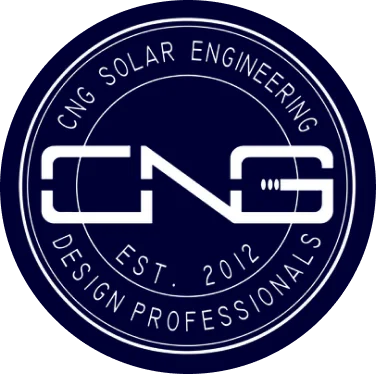A well-planned residential solar system design can save your company time and resources.
California has long been a hotbed of solar energy adoption, thanks to its abundant sunshine and a strong commitment to sustainability.
For solar installation companies, this presents a vast and growing market for residential solar systems.
But to tap into this market effectively, it’s essential to understand the basics. This will not only help you serve your customers better but also enhance your reputation as a reliable solar solution provider.
So if you’re a solar installation company, make sure to keep the following in mind:

1. Solar Panel Selection
Choosing the right solar panels is a crucial aspect of residential solar system design.
In California, homeowners often seek high-efficiency panels that maximize energy production in limited space.
Monocrystalline panels are a popular choice due to their superior efficiency and sleek appearance. However, polycrystalline panels offer a more cost-effective option.
As a solar installation company, you should be well-versed in the technical specifications of various panel brands and models.
Understanding factors like panel efficiency, degradation rates, and warranty terms will enable you to provide informed recommendations to your customers based on their specific needs and budget constraints.
2. Inverter Selection
Inverters play a pivotal role in converting the direct current (DC) generated by solar panels into the alternating current (AC) used in homes. California’s diverse climate and shading conditions require careful consideration when selecting inverters.
Two common options are:
- String Inverters: These connect multiple panels in a string to a single inverter. They are cost-effective but have a potential drawback: if one panel underperforms due to shading or dirt, the entire string’s efficiency may be compromised.
- Microinverters: These are attached to individual solar panels, ensuring that each panel operates at its maximum capacity. While microinverters are more expensive, they mitigate the impact of shading and other issues, making them a popular choice in California.
You should also assess shading, panel layout, and budget constraints to determine the most suitable inverter solution for each project.
3. Roof Assessment
Before designing a solar system, it’s essential to conduct a thorough roof assessment.
Solar panels are a long-term investment, and they will be mounted on the homeowner’s roof for many years. Thus, it is crucial to ensure that the roof’s structural integrity and load-bearing capacity can support the added weight of solar panels.
In addition, any pre-existing roof issues, such as leaks or damage, should be addressed before installation to prevent complications down the road.
By offering this, you can provide comprehensive solutions to your customers, making you a trusted partner in their solar journey.
4. Local Regulations and Permits
Navigating the maze of local regulations and permitting requirements in California can be a daunting task for homeowners.
As a solar installation company, you should stay up-to-date with these regulations to assist your customers in obtaining the necessary permits and ensuring compliance with all codes.
Being knowledgeable about available incentives and rebates, such as the federal Investment Tax Credit (ITC) and California’s solar incentives, will also help your customers maximize their return on investment.
By offering guidance on these financial aspects, your company can become a valuable resource for homeowners looking to make the switch to solar energy.
5. Net Energy Metering (NEM)
As a solar installation company, you should also educate your customers about California’s Net Energy Metering (NEM) program. This allows homeowners to earn credits for excess electricity generated by their solar systems.
Understanding how NEM works and how to take advantage of it is essential for homeowners looking to offset their electricity costs effectively.
6. Financing Options
For many homeowners, the upfront costs of solar installations can be an issue. That’s why as a solar installer, you should be knowledgeable about financing options such as solar leases, power purchase agreements (PPAs), and solar loans.
These alternatives can make solar more accessible to a broader range of customers and increase the adoption rate.
7. Maintenance and Monitoring
A successful residential solar system design doesn’t end with installation.
Regular maintenance and monitoring are essential to ensure the system operates efficiently throughout its lifespan.
As a solar installation company, you can also offer maintenance packages to your customers. This may include services like panel cleaning, system inspection, and performance monitoring.
This ongoing relationship ensures customer satisfaction and fosters trust in your company’s expertise.
Save Time and Let CNG Handle the Residential Solar System Design!
Save yourself the hassle by partnering with us for high-quality residential solar designs. CNG Solar Engineering has an experienced team that will take care of all the intricate details, ensuring that your solar installation company can focus on what you do best – delivering top-notch solar solutions to your customers. Contact us today and let’s talk about how we can help your company with our expertise!
CNG Solar Engineering
Book now for a free estimate
BOOK NOW

